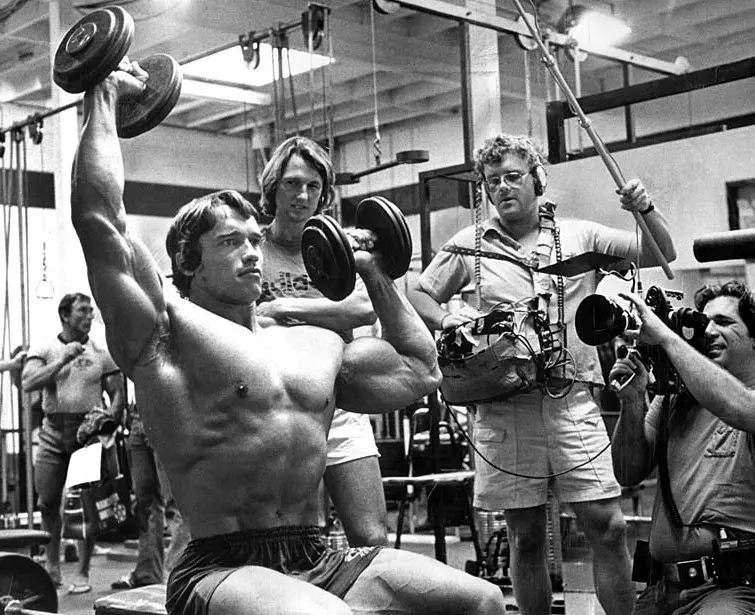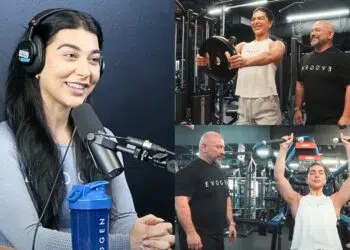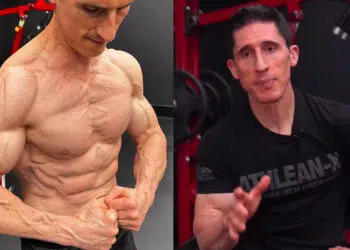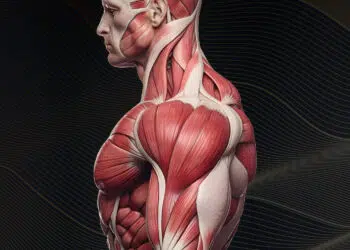If you desire to maximize your shoulder growth potential then you can only do so if you possess the knowledge of how to effectively train this three-headed monster.
Full development of the anterior (front), lateral (side), and (posterior) heads create the impressive roundness and width to the upper body that we all hope to achieve. Plus, it prevents an imbalance in the muscles. However, many simply don’t give their shoulders enough attention.
And only performing the shoulder press isn’t going to cut it.
But, we’re going to do something about this once and for all. So, if you find that your delts don’t look quite like cannonballs yet, then we can definitely help you with that…
Anatomy of The Shoulder
Like mentioned previously, the shoulder has three heads. The anterior head is worked during any pressing movement, while the lateral head is often targeted with side raises, and the rear head can be worked using a reverse fly variation although it gets stimulated during back training.
The shoulder joint is rather complex and it’s formed where the humerus inserts into the scapula which allows it functions as a ball and socket. But, due to its versatile range of motion, the shoulder is highly susceptible to pain and injury. (1)
Level Up Your Fitness: Join our 💪 strong community in Fitness Volt Newsletter. Get daily inspiration, expert-backed workouts, nutrition tips, the latest in strength sports, and the support you need to reach your goals. Subscribe for free!
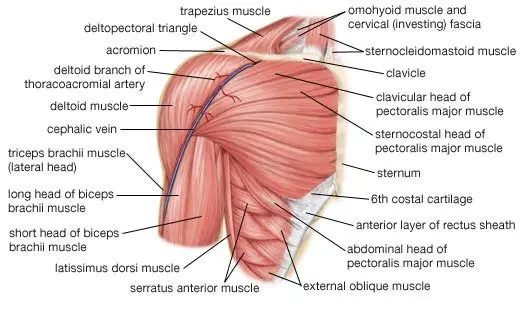
So, you really have to be smart about your training because long-term shoulder discomfort is something you never want to experience.
Key Shoulder Training Points
Shoulder training does not have to be complicated. You can make incredible gains with a few compound and isolation exercise variations.
The anterior (front) deltoids get a lot of stimulation from the bench and shoulder press, and therefore, do not need much isolation work.
But, the lateral and posterior heads need sufficient isolation for maximum development. Especially the posterior head because it’s common to develop an imbalance from too much pressing and not enough upper posterior chain (backside of the body) training.
Imbalances can also result in injury due to one part of the muscle not being able to perform its role as well as another. For example, too much pressing without enough pulling can weaken the ability of the posterior muscles to support scapular retraction.
So with that being said, the perfect shoulder workout will consist of a combination of pressing movements along with lateral and posterior exercises.
But make no mistake, the shoulders can be a rather stubborn area to get growing for some people. However, with some hard work and lots of reps, it’s entirely doable.
Best Way To Train Shoulders
Hypertrophy (What is Hypertrophy) happens in many different rep ranges. Although, moderate rep ranges are the most recommended range to stick with most of the time to elicit gains. The reason being is that this range allows you to lift heavy enough to stimulate growth with enough time under tension. (2)
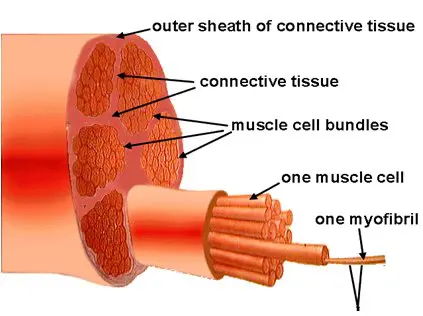
However, the science isn’t so simple as there are different variables and studies out there regarding repetitions and muscle growth. And scientific literature supports multiple strategies for muscle hypertrophy.
Now, new research shows that muscle growth is dose-dependent which means more training volume = more growth!
And there’s a 2019 study which found that higher training volume is superior for hypertrophy after several trained men did either low, moderate, or high volume training for 8 weeks to determine which elicited the best results. (3)
However, there were no significant differences in strength gains when comparing all three groups, although all volunteers did see great improvements in strength.
But, intensity must be present as this is where a lot of muscle growth stimulus occurs.
In fact, one 8-week study compared high volume training (moderate intensity, short rest periods) with high-intensity training (high-intensity with low volume/reps and longer rest periods) and the latter elicited better strength and hypertrophy gains. (4)
And yes, this is conflicting with the previously-mentioned study.
So, how do we settle this? Well, this research convinces us that training a muscle multiple times per week is the best approach for increasing training volume while still maintaining intensity. And this is well-known to be the ideal way to train for achieving optimal results.
But we have to do this in a way that doesn’t result in overtraining, which means that strategy and learning how to listen to your body is key.
Takeaway: Train more frequently which will allow you to do more per session.
Training Methods
The shoulders are like any other muscle in that drop sets, supersets and pyramiding sets are going to be very beneficial for contributing to muscle growth and strength progress.
Supersets are time-saving, not too mention, you can really get a great pump and according to one study, supersets can increase metabolic conditioning, which improves your body’s ability to utilize energy during intense training sessions. (5)
As far as drop sets, this is also a very effective training method for increasing metabolic conditioning but it’s a recommended way to keep the repetitions going for the purpose of breaking down muscle tissue which creates a repair response resulting in hypertrophy. (6)
Drop sets are usually performed by doing one exercise to failure or just before it and then dropping the weight to continue the set until you once again reach failure. This can be done in several ways and another popular technique is to change your body’s position to squeeze out more reps which is called a mechanical drop set. (7)
And of course, we have pyramid sets which involve starting with a lighter weight and increasing the resistance each set until you’ve reached your heaviest set which places the most stress on the target muscle/s.
Besides straight sets, these training techniques are highly recommended for improving every aspect of your training.
Form and Joint Safety
We also have to know how to train to avoid injury by following how the joint moves through its natural motion.
Internal rotation of the shoulders is not safe and although many get away with it for a while, shoulders issues often come back due to the long-term stress on the joints.
Two exercises that come to mind when thinking about internal rotation is the upright row and dumbbell lateral raise where the thumbs are lower than the pinkies. These movements can result in shoulder impingement issues which is the last thing you want to experience when trying to progress in your training.
And when it comes to pressing movements like the dumbbell and barbell shoulder press, it’s recommended to keep the elbows pointing straight forward or at least not too outward to where your shoulders are placed more at an externally rotated angle.
That’s why we must utilize the safest and most functional position of the shoulder so that it can move freely without forcing an awkward position.
The shoulder joint is nothing to mess around with so proper form is essential, which means you must leave the ego at the front door.
Resistance Loads
We’ve touched on this topic briefly but let’s get a little deeper with some studies which focus directly on low vs high training loads.
One piece of scientific literature states that training with low resistance loads (30% of one-rep max) elicits similar results for hypertrophy compared to training with heavier loads (80% of one-rep max). (8)
But, this was the case when reps were taken to failure.
Level Up Your Fitness: Join our 💪 strong community in Fitness Volt Newsletter. Get daily inspiration, expert-backed workouts, nutrition tips, the latest in strength sports, and the support you need to reach your goals. Subscribe for free!
The same study also supports using more volume through sets for optimal hypertrophy (to an extent of course).
Another study enlisted 18 young resistance-trained men who either performed low load (25-35 reps) or high-load (8-12 reps) training. Well, gains in muscle growth were similar although strength improvements were better for the high-load group (which is expected). (9)
A similar study was done with 23 untrained women and surprisingly, the low-load group (30% one-rep max) made similar improvements when compared to the high-load group (80% one rep max) for increasing one-rep max strength when reps were taken to failure during 12 weeks.
However, no significant changes in fat-free mass were noted for either group. But as we know with many studies, there are more variables we could possibly consider.
Takeaway: Similar results occur with low-load (light) training when compared with heavy training when reps are taken to failure.
Exercise Range of Motion
First, it’s important to remember that a muscle’s range of motion is different than a joint’s range of motion.
And this is where many people differ due to how they are physically structured. Not too mention, certain muscles can only function safely and optimally within a certain range of motion.
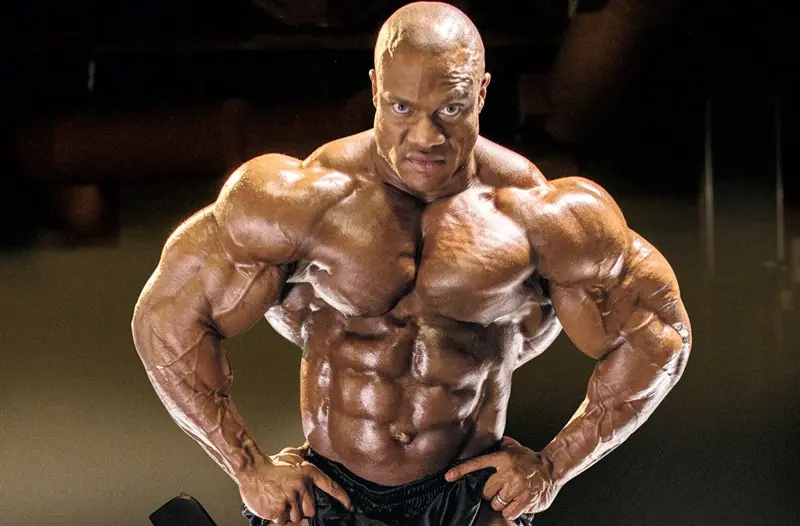
For instance, many people overdo the shoulder press which usually involves dropping the elbows well below parallel during the negatives. But, what most people don’t know is that the additional movement is a waste of energy.
The shoulders are most activated when the upper arms are about parallel to the ground because the muscles take over at this point to allow for extension.
This is the ideal way to train shoulders unless you’re competing in a sport where a deeper range of motion is not an option.
Another example is if you were to perform dumbbell raises, you’d find it to be very beneficial to utilize partial reps (middle portion of a rep) to maximize tension on the side delts.
But if you did the same exercises using cables, then you can perform the full movement without having to worry about taking tension off of the muscle. Therefore, you can get a better stretch in the delts.
So, don’t try to copy what other people are doing and get a feel for what works best for you. Sometimes a lack of mobility gets in the way and you may feel pain or a lack of effective movement.
Well, this is a good sign to stop what you’re doing and reevaluate to find a movement that allows you to benefit without risking injury.
Sample Shoulder Workout
Here’s an effective workout you can do which will involve several shoulder exercises which take the shoulder through its full range of motion while utilizing multiple angles to stimulate a different portion of the deltoid.
You can perform this workout once per week or no more than twice per week depending on your level of experience.
Banded press
It’s a good idea to warm up your shoulders with an exercise that targets all heads and the rotator cuff to ensure you can perform safely and optimally while engaging the necessary muscles.
To do this exercise, attach a band to a base in front of you at about chest level. Then, grip both ends with the same position as you would a shoulder press. When you press, pull the band outward and back as you press it upward.
Sets/reps: 1-2 sets of 12-15 reps
Seated Smith machine overhead press
Moving on to the next exercise, the Smith machine is an excellent tool for really loading the deltoids because there’s minimal stabilization required to press some big poundages.
For this one keep your arms positioned closer so that you can keep your elbows pointed straight out in front of you. This is a better position for the shoulders.
Sets/reps: 3 x 10, 8, 5
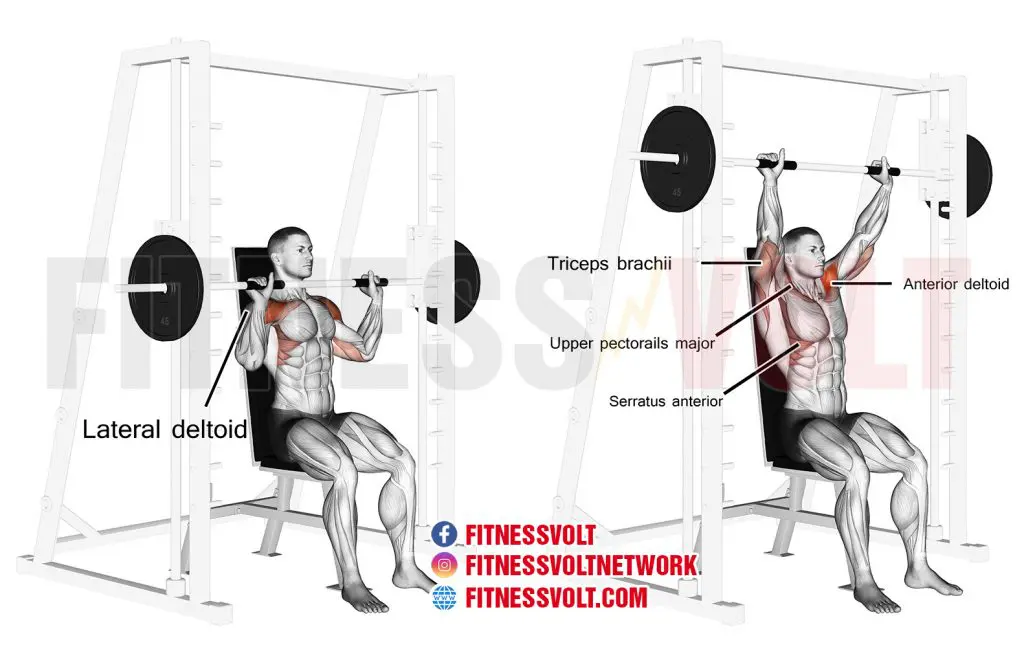
Standing bent-arm dumbbell lateral raise drop set
This is quite possibly the best way we can overload the lateral deltoids. You can train heavier than if your arms are extended straight and research shows that this variation is superior for developing the target area.
But when you’re performing this exercise, remember to keep your thumb slightly high than your pinkie.
For the drop set, perform 10 reps with a weight which will result in muscular failure, then immediately drop the weight by 5 pounds until you reach failure once again.
Sets/reps: 3 sets x 10 w/drop set to failure
Cable lateral raise
This is an exercise that everyone should do for the lateral delts. Using cables keeps tension on the muscle throughout the entire repetition and you can get an effective stretch at the bottom as well.
Sets/reps: 2 sets x 15 reps
Reverse pec dec fly
When it comes to training the posterior deltoids, machines and cables are a tool we highly recommend. Now, the posterior deltoids do get a lot of stimulation from rows and pretty much every back movement so you are utilizing plenty of free weight exercises to hit this area.
But, now it’s time to really focus on the squeeze and contraction with the pec dec reverse fly.
Now, when performing this exercise, you want to make sure your elbows are moving back behind your body to a pretty good degree. Then, you’ll hold this position for 2 seconds.
It’s also harder to cheat using this movement.
Sets/reps: 3 sets x 12
Face Pull
No shoulder workout is complete without the face pull. It’s excellent for improving posterior shoulder imbalance and posture. There should be no rocking or cheating with this exercise.
Do each rep nice and slow, holding for 2 seconds each time.
Sets/reps: 3 sets x 15 reps
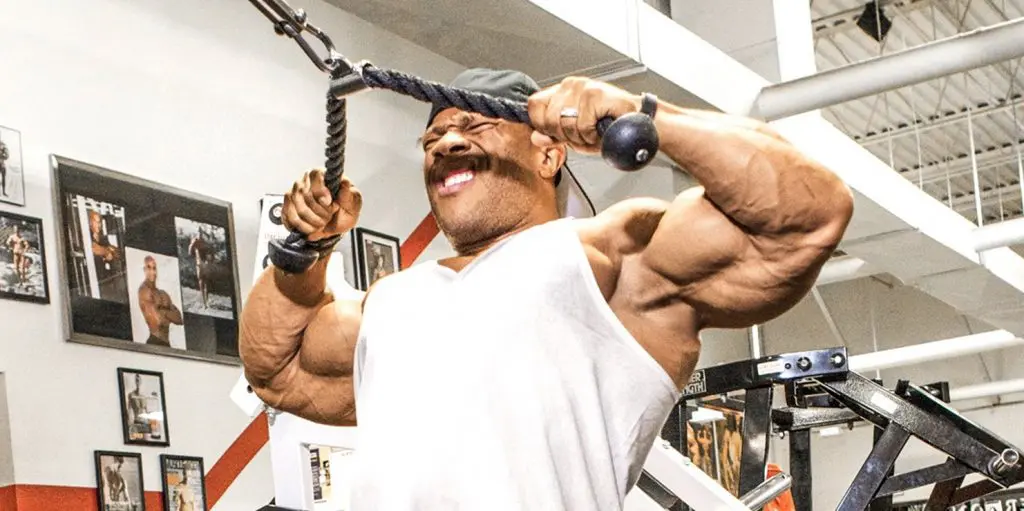
Wrapping Up
Shoulder training is simple, yet very challenging. You’ll definitely need some mental fortitude but there’s no other way to attack this area. It can be stubborn but with enough attention and dedication, everyone can build impressive cannonballs.
Plus, well-developed deltoids will make everything look better overall. Not too mention, the shoulders contribute to all pressing movements and so the stronger, the better!
Try out this workout and we can assure you that you’ll have more jacked shoulders.

